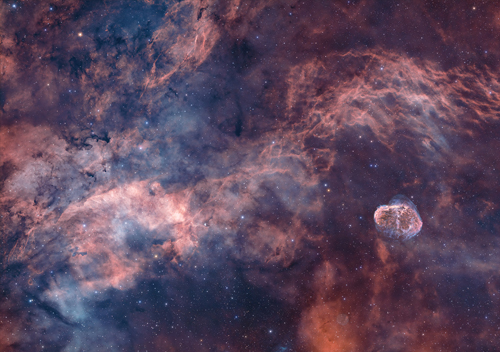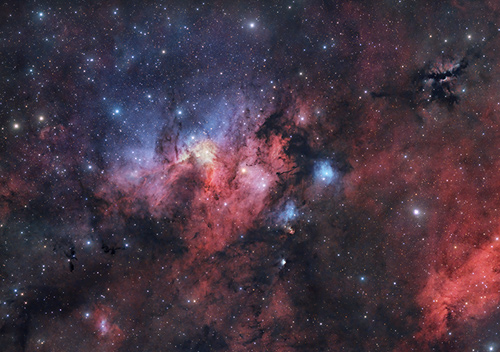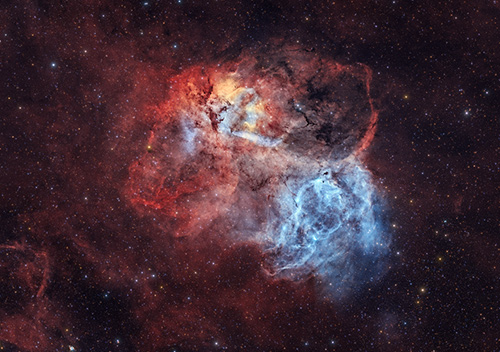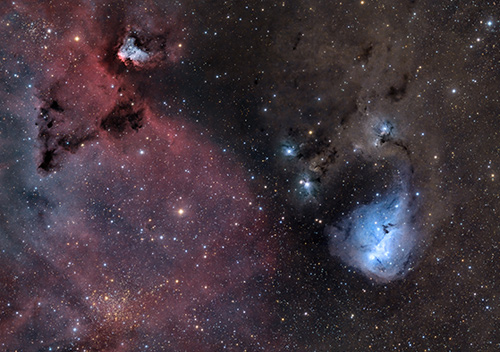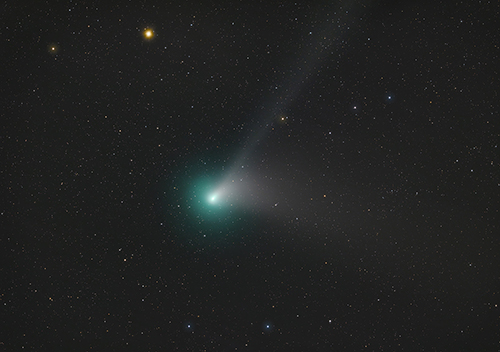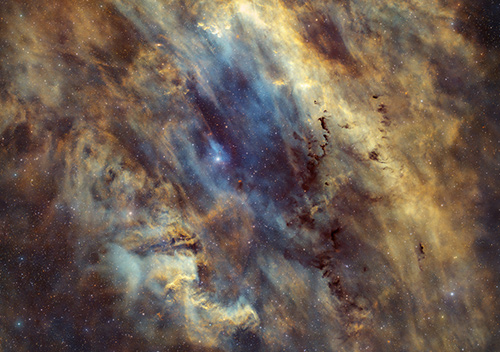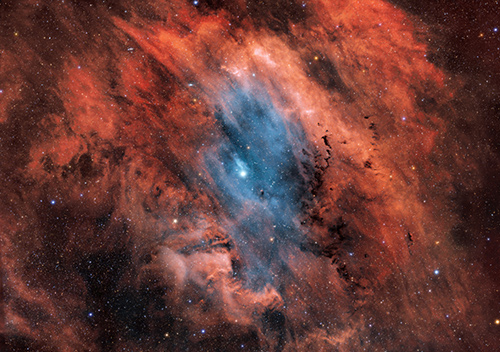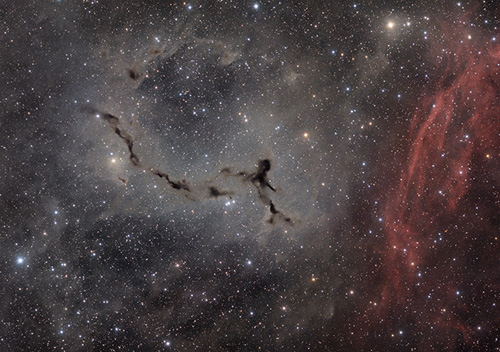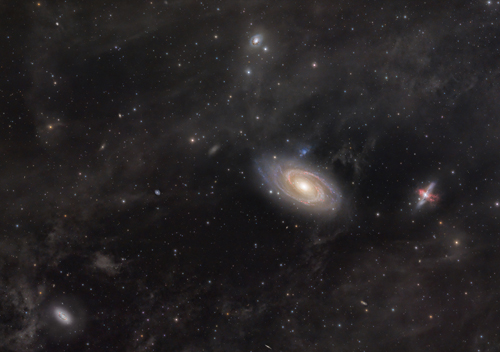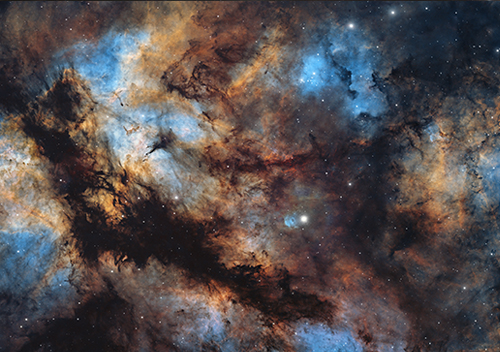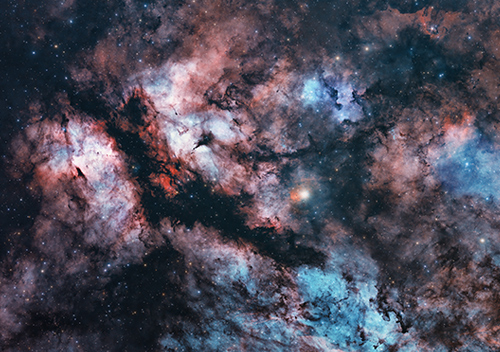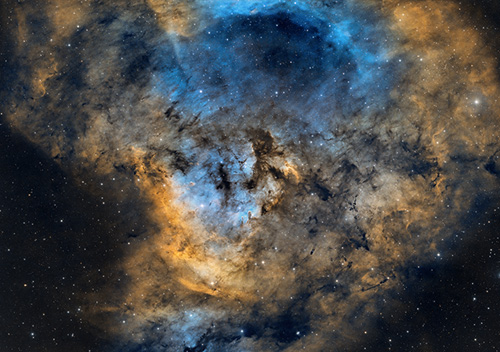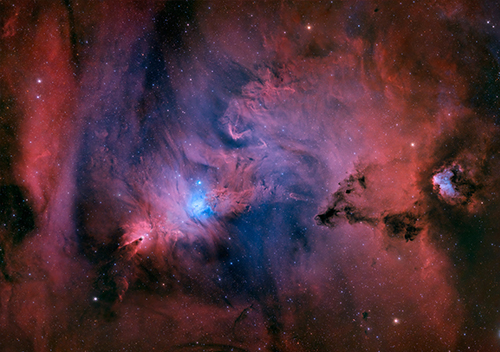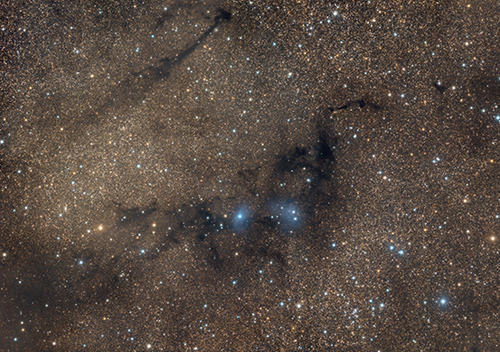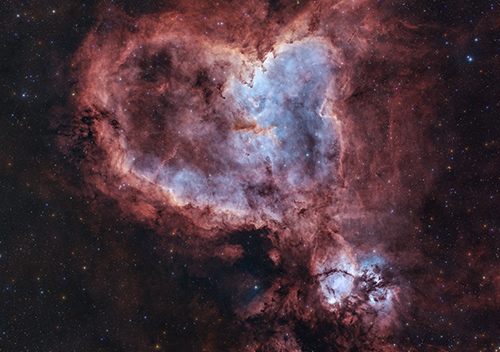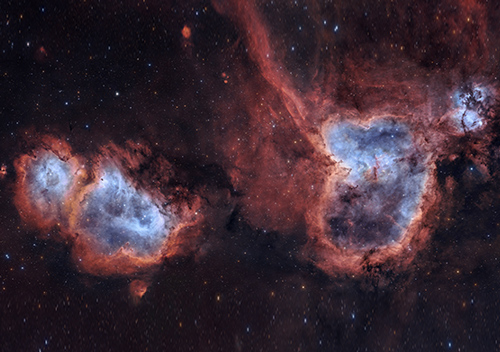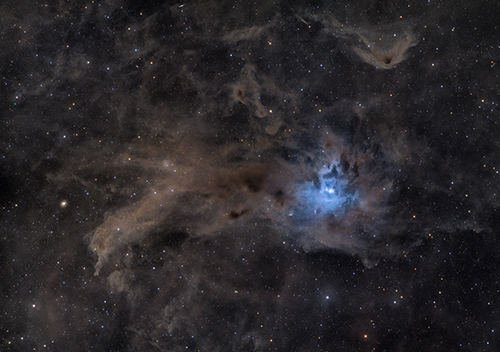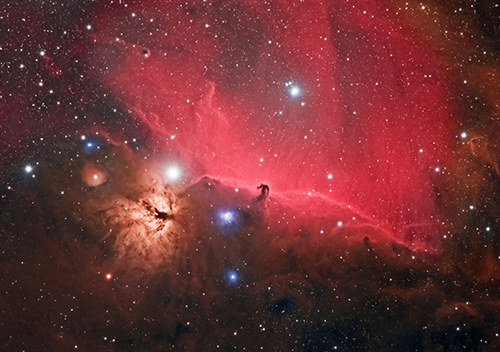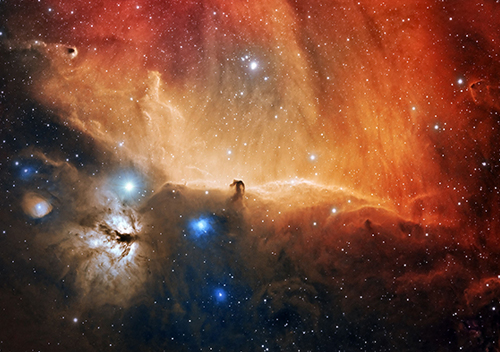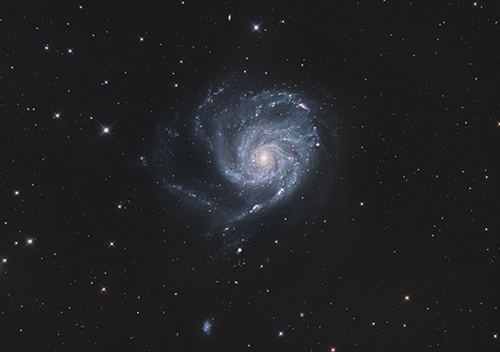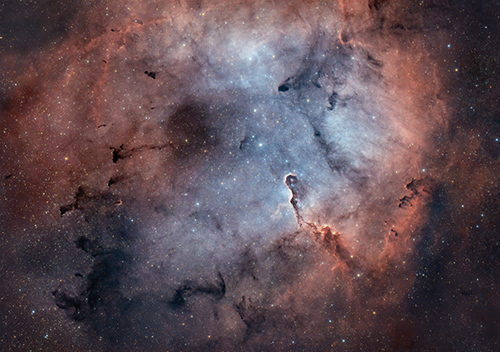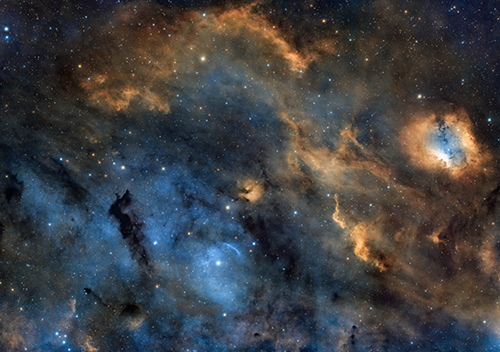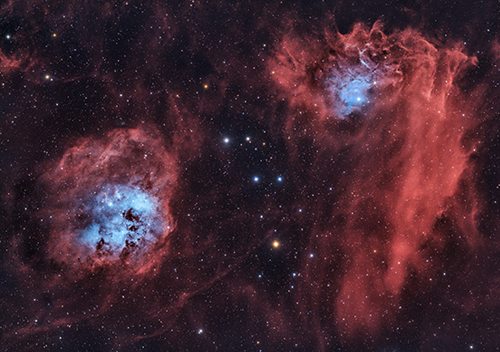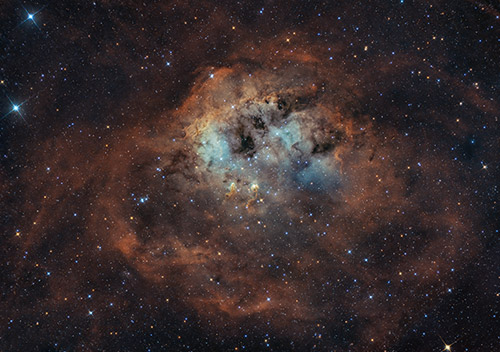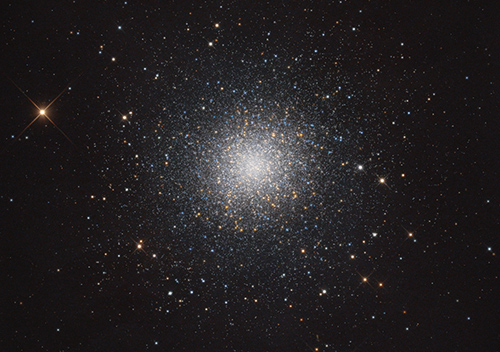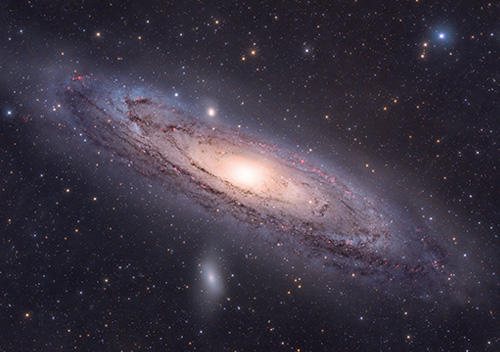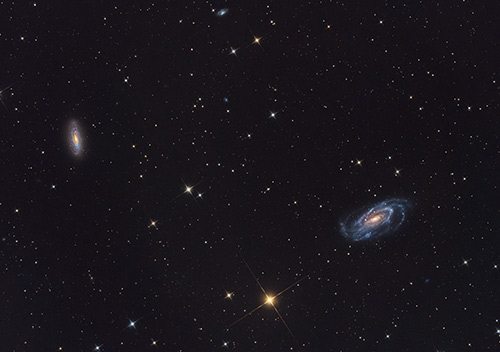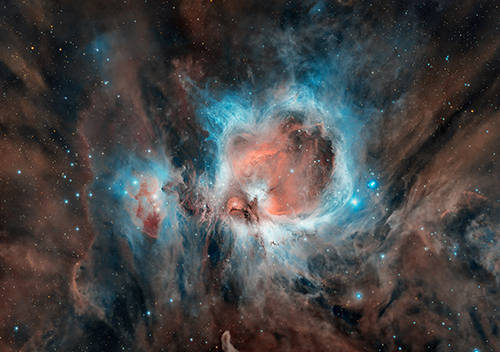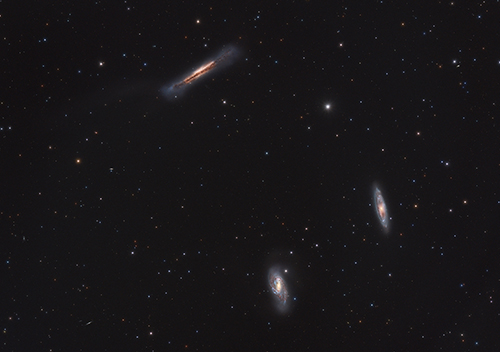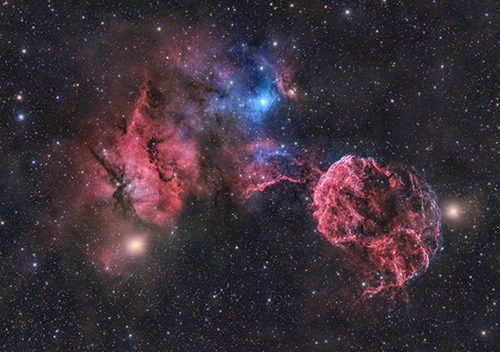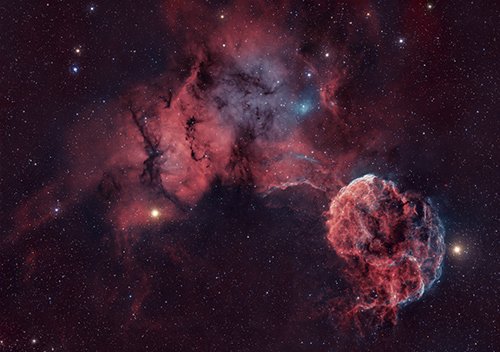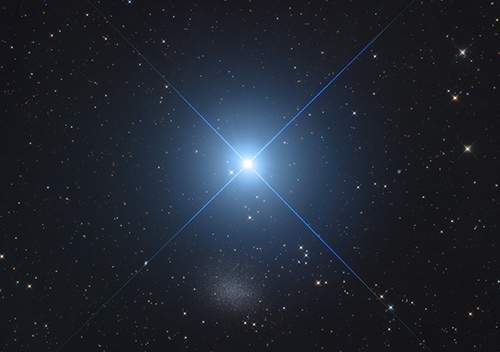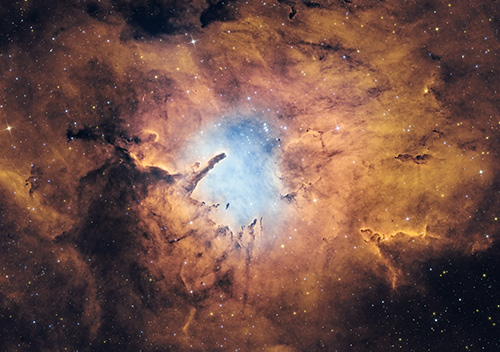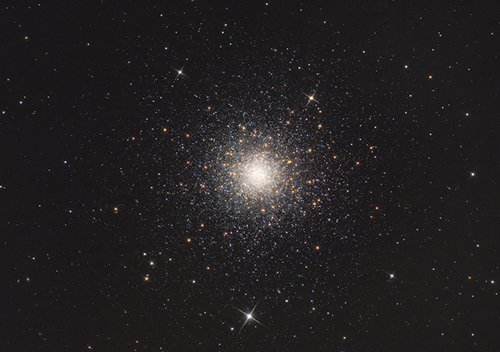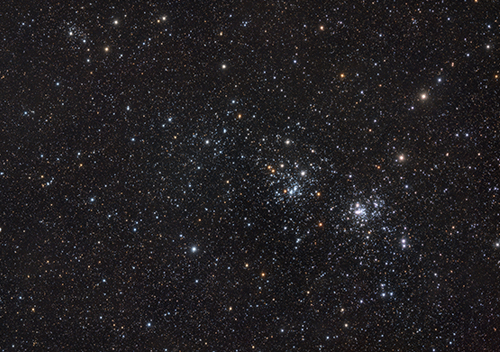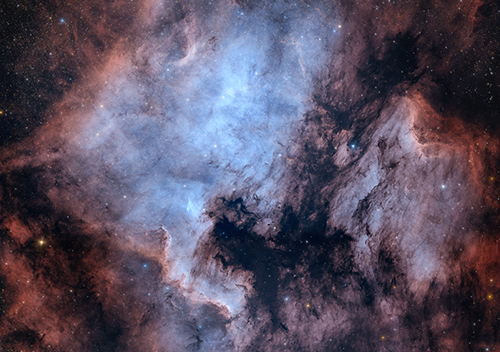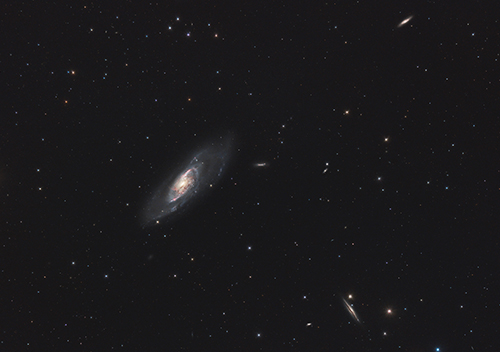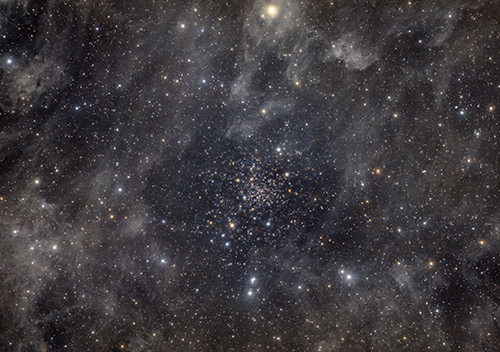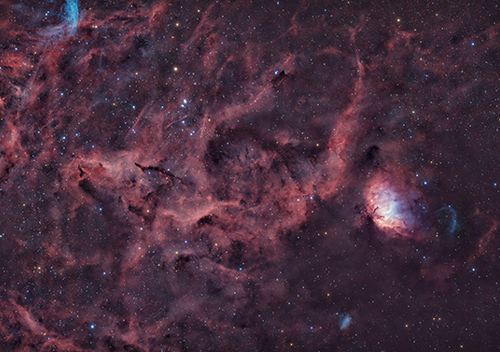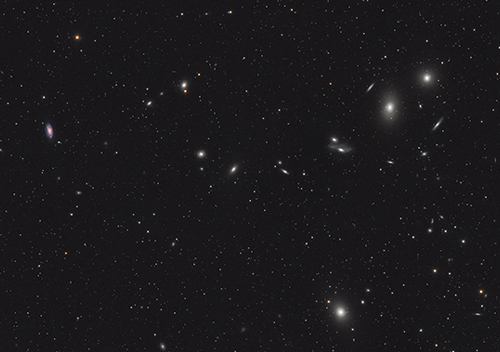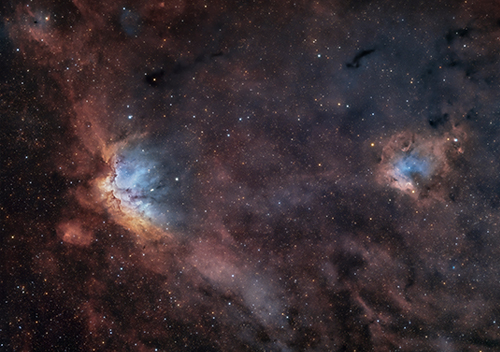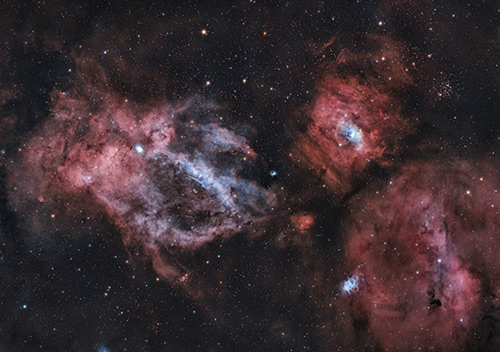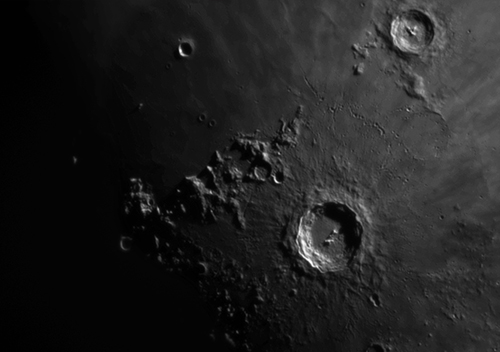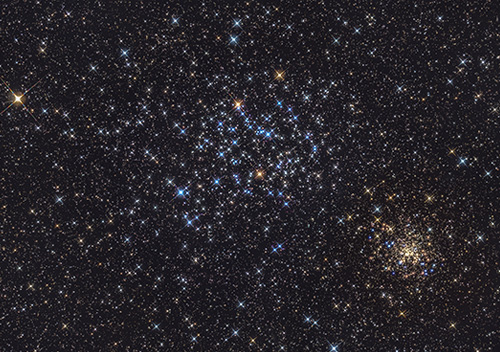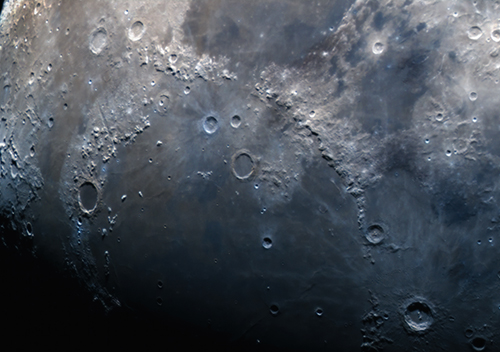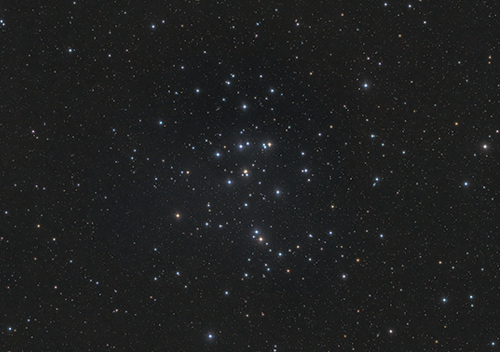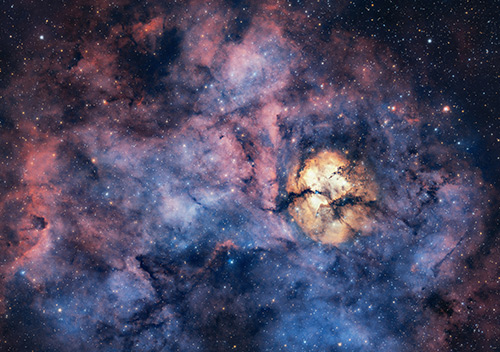
The Pinwheel Galaxy & Friends
M 101 / NGC 5474 / NGC 5477
The Pinwheel Galaxy (M101) is a face-on spiral galaxy 21 million light-years away from Earth in the constellation Ursa Major. M101 is a large galaxy, with a diameter of 170,000 light-years. By comparison, the Milky Way has a diameter of between 100,000 and 120,000 light-years. It has around a trillion stars and a disk mass on the order of 100 billion solar masses, along with a small central bulge of about 3 billion solar masses. Its characteristics can be compared to those of Andromeda Galaxy. M101 has a high population of H II regions, many of which are very large and bright. H II regions usually accompany the enormous clouds of high density molecular hydrogen gas contracting under their own gravitational force where stars form. H II regions are ionized by large numbers of extremely bright and hot young stars; those in M101 are capable of creating hot superbubbles. In a 1990 study, 1,264 H II regions were cataloged in the galaxy.
In May 2023, the Supernova SN 2023ixf, which is visible in this picture, showed up within M 101. M101 is asymmetrical due to the tidal forces from interactions with its companion galaxies.
Bottom right, NGC 5474 is visible, a peculiar dwarf galaxy. It is one of several companion galaxies of the Pinwheel Galaxy. This galaxy is the closest to the Pinwheel Galaxy itself. The gravitational interaction between NGC 5474 and the Pinwheel Galaxy has strongly distorted the former. As a result, the disk is offset relative to the nucleus.
NGC 5477, right below the Pinwheel, is another dwarf galaxy in the Messier 101 group. Without obvious structure, but with visible signs of ongoing star birth, NGC 5477 looks much like an typical dwarf irregular galaxy. The bright nebulae that extend across much of the galaxy are clouds of glowing hydrogen gas in which new stars are forming.

In May 2023, the Supernova SN 2023ixf, which is visible in this picture, showed up within M 101. M101 is asymmetrical due to the tidal forces from interactions with its companion galaxies.
Bottom right, NGC 5474 is visible, a peculiar dwarf galaxy. It is one of several companion galaxies of the Pinwheel Galaxy. This galaxy is the closest to the Pinwheel Galaxy itself. The gravitational interaction between NGC 5474 and the Pinwheel Galaxy has strongly distorted the former. As a result, the disk is offset relative to the nucleus.
NGC 5477, right below the Pinwheel, is another dwarf galaxy in the Messier 101 group. Without obvious structure, but with visible signs of ongoing star birth, NGC 5477 looks much like an typical dwarf irregular galaxy. The bright nebulae that extend across much of the galaxy are clouds of glowing hydrogen gas in which new stars are forming.
Image Details
| Date |
April 3, 13, 21, 25 & May 27, 2023 |
| LOCATion |
Hannover (Germany) |
| Sky Quality |
Bortle 5 |
| Telescope |
Skywatcher 200/1000 @750mm f/3.75 |
| Mount |
Skywatcher EQ6-R Pro |
| Main Cameras |
ZWO ASI 2600 MC Pro Gain 100, Offset 18, -10° TS 2600 MP Gain 100, Offset 50, -10° |
| Focuser |
ZWO EAF |
| Filter |
Baader UV/IR-Cut Filter Antlia EDGE H-alpha 4.5nm |
| Exposure |
RGB: 517 × 60″ (8h 37′) & 40 × 30″ (20′) Ha: 151 × 120″ (5h 2′) Luminance: 262 × 60″ (4h 22′) Total: 18h 1′ |
| Guiding |
ZWO ASI 120MM, PHD2 |
| Calibration |
Flats, Darks, Darkflats |
| Software |
N.I.N.A., EQMod |
| Other |
Starizona Nexus Reducer & Corrector |
| Processing | Astropixelprocessor, Photoshop, Pixinsight |

Gallery
